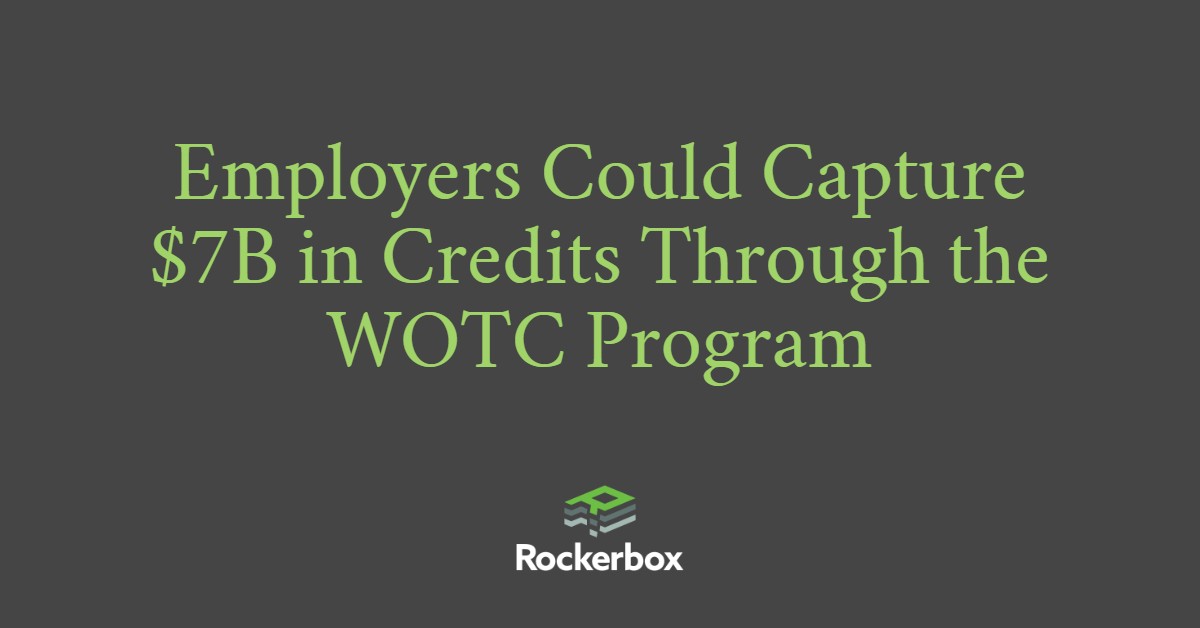
The Social and Economic Impact of the Work Opportunity Tax Credit (WOTC) Program
Employer Impact
The Work Opportunity Tax Credit (WOTC) program significantly benefits participating employers by improving their cash flow, often by as much as 40%. This financial boost enables employers to stabilize their operations and even grow their businesses organically. The tax credits captured through WOTC can be used to offset costs associated with new hire onboarding and training. Given that the average new hire onboarding cost in the United States is approximately $1,000, the credits provided by WOTC, which range between $2,400 and $9,600 per eligible employee, can significantly reduce or even eliminate these expenses.
By participating in WOTC, employers can reinvest the savings into further business growth and employee development. This creates a positive feedback loop that enhances workforce productivity and overall business performance.
Employee Impact (job seeker)
The WOTC program also has a profound impact on employees, particularly those from historically disadvantaged groups. It provides a pathway to full-time employment for individuals who might otherwise struggle to find job opportunities. For instance, there are more than 40 million U.S. citizens participating in SNAP (Supplemental Nutrition Assistance Program) and TANF (Temporary Assistance for Needy Families) programs. WOTC incentivizes employers to hire these individuals, helping them transition from public assistance to self-sufficiency.
Additionally, WOTC helps ex-felons reintegrate into society by providing financial incentives for employers to hire them. This reduces recidivism rates and supports these individuals in maintaining full-time employment. Similarly, job seekers who have recently completed vocational rehabilitation programs benefit from WOTC, which aids in their employment retention and reduces the likelihood of returning to rehabilitation.
Veterans also benefit from WOTC, as they are one of the target groups eligible for the credit. Employers can receive up to $9,600 for hiring qualifying veterans. Studies have shown that these credits can help retain veterans through increased compensation or bonuses and offset the costs of onboarding and training.
Socio-Economic Impact
A study conducted by the Wharton School in 2012 highlighted the socio-economic benefits of the WOTC program. The report stated that WOTC helps reduce federal subsidy expenses, estimating that the federal government saves approximately $11.36 in subsidy payments for every $1.00 in credits captured through the program. This substantial saving underscores the program’s effectiveness in reducing public assistance dependency and promoting economic self-sufficiency among disadvantaged groups.
According to Wharton’s findings, WOTC not only provides significant tax savings to employers but also promotes diversity and inclusion within the workforce. By reducing the unemployment rate among target groups, WOTC contributes to broader economic stability and community development. Businesses leveraging WOTC often experience enhanced financial performance, which creates a positive feedback loop where savings can be reinvested into further growth and employee development, fostering a more robust and resilient economy.
For more detailed insights into the economic and social impacts of WOTC, you can refer to Wharton’s research articles and case studies on their website or related publications in academic journals.
For further reading, check out the resources available through Knowledge at Wharton:
– [Research Roundup: The Financial Impact of Social Impact](https://knowledge.wharton.upenn.edu/article/research-roundup-financial-impact-social-impact/)
To determine the potential tax credits captured through the Work Opportunity Tax Credit (WOTC) program for specific target groups such as Veterans, Supplemental Nutrition Assistance Program (SNAP) recipients, Temporary Assistance for Needy Families (TANF) recipients, ex-felons, and vocational rehabilitation participants, we can look at the estimated number of individuals in each category and apply an average tax credit value. Here are the approximate figures for these target groups:
1. Veterans:
– Approximately 139,058 veterans were hired under the WOTC program in 2022.
2. SNAP Recipients:
– Over 40 million individuals participate in the SNAP program in the United States. It’s estimated that a significant portion of these participants may be eligible for the WOTC program.
3. TANF Recipients:
– There are about 1.1 million families (including adults and children) receiving TANF benefits in the U.S. in 2022.
4. Ex-Felons:
– Approximately 19 million people in the U.S. have felony convictions. Not all may seek employment immediately, but a sizable number could benefit from WOTC incentives.
5. Vocational Rehabilitation Participants:
– Around 1 million individuals receive vocational rehabilitation services annually, with many potentially qualifying for WOTC.
Calculation of Potential Tax Credits
Given these numbers, if we apply an average tax credit of $1,000 per eligible individual, the potential credits can be calculated as follows:
1. **Veterans**: 139,058 individuals * $1,000 = $139,058,000
2. **SNAP Recipients**: Estimating conservatively, if 10% of 40 million participants qualify, that’s 4,000,000 individuals * $1,000 = $4,000,000,000
3. **TANF Recipients**: Assuming 50% of 1.1 million families have employable members who qualify, that’s 550,000 individuals * $1,000 = $550,000,000
4. **Ex-Felons**: If 10% of 19 million individuals seek employment, that’s 1,900,000 individuals * $1,000 = $1,900,000,000
5. **Vocational Rehabilitation Participants**: If 50% of 1 million participants qualify, that’s 500,000 individuals * $1,000 = $500,000,000
Total Potential Tax Credits
Summing up these estimates:
$139,058,000 (Veterans) + $4,000,000,000 (SNAP) + $550,000,000 (TANF) + $1,900,000,000 (Ex-Felons) + $500,000,000 (Vocational Rehabilitation) = $7,089,058,000
Thus, these five target groups combined could potentially capture over $7 billion in tax credits through the WOTC program.
This substantial amount of tax credit not only benefits employers by improving their cash flow but also plays a crucial role in providing job opportunities for historically disadvantaged groups, leading to broader social and economic benefits. For more detailed insights into the economic and social impacts of WOTC, refer to resources provided by the Wharton School and other related studies.